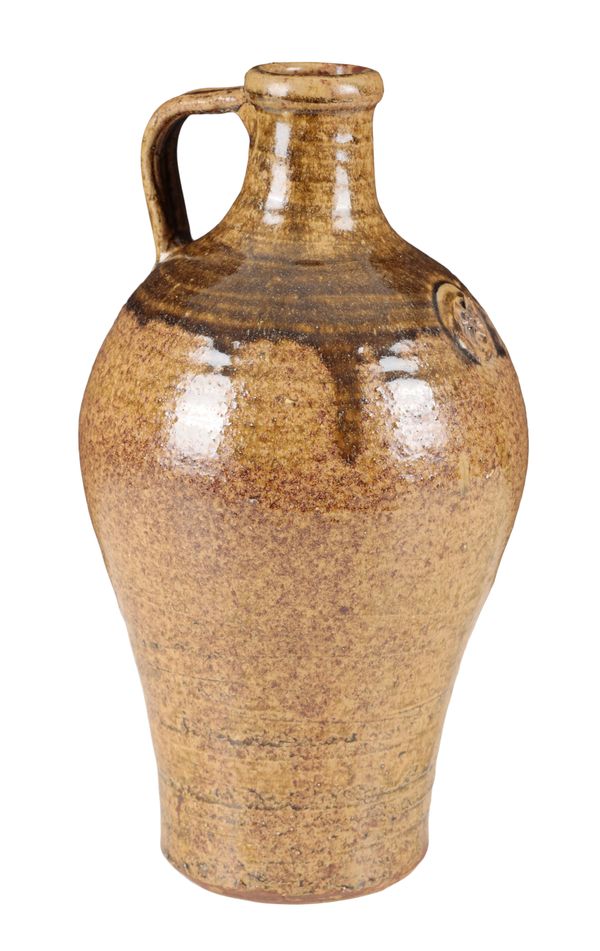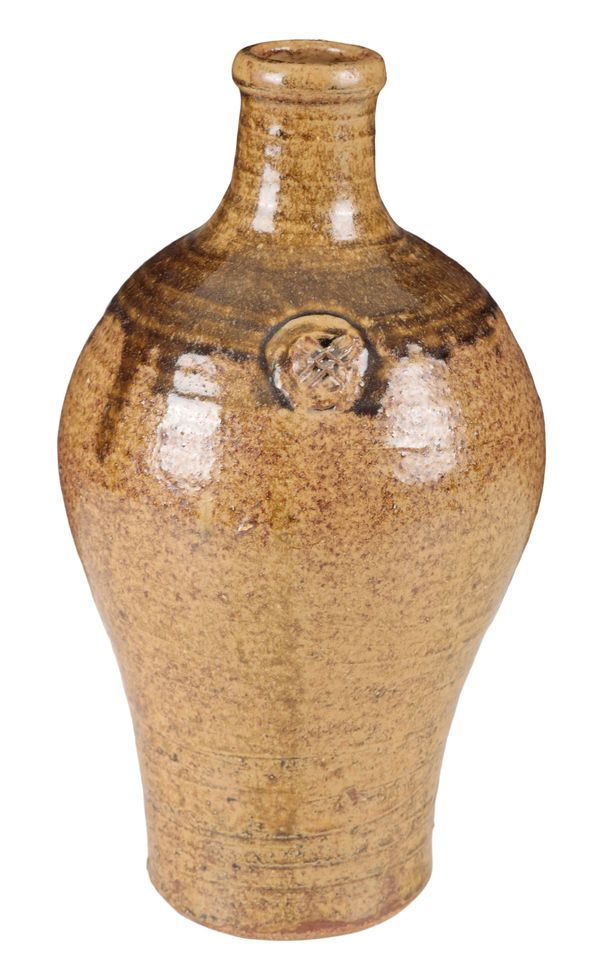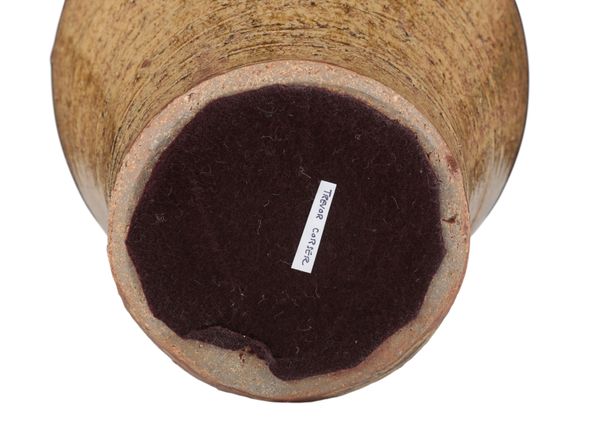1984, with raised medallion of cross-hatched design, 35cm high
Trevor Corser served forty years at Leach Pottery, St Ives, until it closed in 2005. Originating from Oldham, he had worked as a fisherman in St Ives and gradually progressed from portering at the Leach Pottery to actual skilled production of its iconic wares. He studied under Bernard Leach and alongside William Marshall. He later became the recognised studio potter we know today, all true to the Leach traditions of simple design.
| Estimate: | £50 - £100 |
| Hammer price: | £50 |
The emergence of studio pottery in the early 20th century represented a profound shift in attitudes to craft, design, and daily life. Rejecting the industrialisation of ceramics, the movement sought to restore the integrity of handmade objects, emphasising function, honesty of materials, and the direct expression of the maker.
At the heart of this movement was Bernard Leach, whose establishment of the Leach Pottery in St Ives, Cornwall, in 1920 became a defining moment. Working alongside Shōji Hamada, Leach created not simply a pottery but a teaching workshop, one that blended the aesthetics of East Asian traditions with the sensibilities of European modernism. Here, generations of apprentices were trained, carrying the ideals of the movement across Britain, Europe, America, and Japan.
The philosophy of the studio potters was most clearly articulated in Leach’s seminal A Potter’s Book (1940), which championed the union of utility and beauty and framed pottery as both an art form and a way of life. This text, combined with the influence of St Ives, helped establish a set of values - simplicity, integrity, and humanity - that remain central to studio ceramics.
While Bernard Leach is often regarded as the movement’s figurehead, the importance of the studio pottery movement lies in its collective spirit. It fostered a community of makers who believed in the cultural significance of craft and in the possibility of enriching everyday life through the handmade. Its legacy continues to shape the way we understand ceramics today, ensuring that the values first championed at St Ives remain vital in the 21st century.



